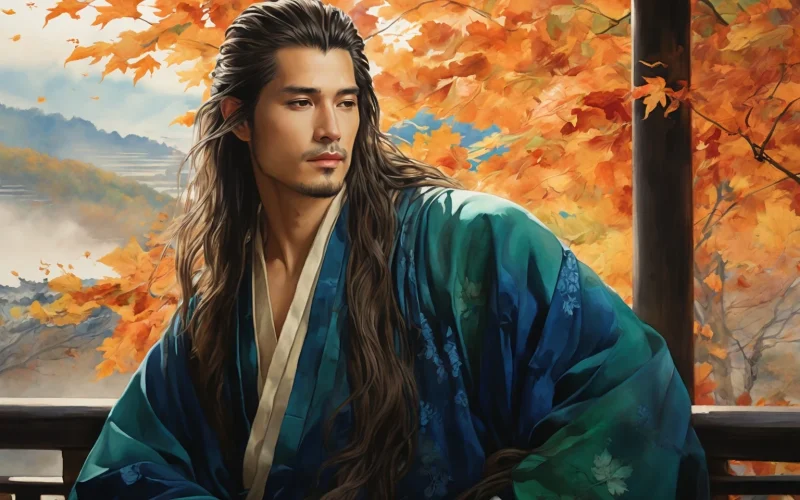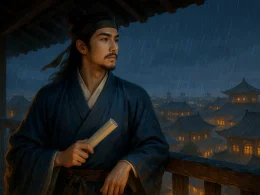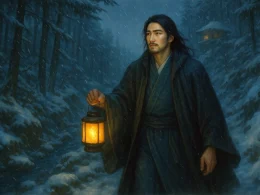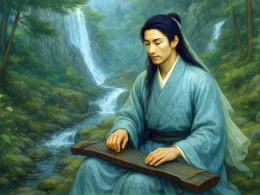Sikong Shu (c. 720 – c. 790), courtesy name Wenming, was a native of Guangping (present-day Yongnian County, Hebei Province). A renowned mid-Tang dynasty poet, he was one of the "Ten Literary Masters of the Dali Era," alongside Lu Lun, Qian Qi, Han Hong, Li Duan, and others. Though his life lacked illustrious achievements, his poetry—marked by genuine emotion in simplicity and profound contemplation in solitude—secured him a unique place in mid-Tang literary circles.
Major works
Life and Career
Sikong Shu was diligent in his studies from a young age. Biographies of Tang Talents records that he "studied earnestly as a child, earning his uncle’s admiration." As an adult, he passed the imperial examinations and entered officialdom with promising prospects, holding positions such as Vice Director of the Waterways Bureau. In middle age, he joined the staff of Wei Gao, Military Governor of Jiannan, serving as an advisor and traveling to the Shu region (modern Sichuan). He formed a close friendship with Li Yue and frequently exchanged poetry with other Dali-era talents, gaining considerable prestige among contemporary literati.
Despite his early ambitions, Sikong Shu faced repeated setbacks in his career, enduring demotions and wanderings that ultimately prevented him from achieving his political aspirations. Though his official career was unremarkable, these experiences became vital material for his poetry, with many works reflecting the turbulence of bureaucratic life.
Born during the prosperous Kaiyuan era and raised in the Tianbao period, Sikong Shu witnessed the Tang dynasty’s dramatic decline from its golden age. The An Lushan Rebellion was a pivotal event that reshaped his fate and worldview. This decade-long upheaval not only destroyed the empire’s former glory but also profoundly altered the spiritual outlook of Sikong Shu and his contemporaries.
After the rebellion, displaced refugees and a shattered landscape became common themes in Sikong Shu’s poetry, earning him a place among the "poets of exile." He wandered south of the Yangtze to escape the chaos, leaving behind numerous nostalgic and grief-laden verses. His poem Farewell to a Friend Returning North After the Rebellion vividly captures the postwar desolation and the poet’s sorrow:
"Startled to meet, we doubt it’s a dream;
In shared grief, we ask each other’s age."
Poetic Style and Themes
Simplicity and Sincerity
Sikong Shu’s poetry is characterized by clarity, restraint, and quiet melancholy, free from ornate embellishment yet deeply expressive. He often wrote of wanderings, farewells, reflections, and landscapes, excelling at conveying profound emotion through concise language. For instance, the lines "Yellow-leaved trees in the rain,
White-haired man beneath the lamp"—just ten characters—paint a poignant scene of solitude in old age.
His style aligns with the Dali school, emphasizing mood and emotional depth over flamboyant rhetoric. In the transition from High Tang grandeur, he and his peers helped establish the introspective, realist style of mid-Tang poetry.
Themes of Exile and Displacement
Sikong Shu’s travel-themed poems stand out, expressing the rootlessness of his era and personal misfortunes. He merged his own struggles with the collective trauma of his time, voicing profound melancholy amid thwarted ambitions. These works resonate not only with personal feeling but also with stark social relevance.
For example, Farewell to a Friend Returning North After the Rebellion depicts refugees returning home after war, conveying the poet’s anguish over epochal change with moving sincerity.
Harmony of Scene and Sentiment
His verses often conjure rich imagery with sparse words, blending emotion with landscape. Skilled at evoking solitude and quiet beauty through motifs like twilight, autumn rain, and homing birds, he crafted lines such as "The light rain ceased overnight;
River winds rise in spring daylight," where nature mirrors the mind’s cool serenity.
Literary Status and Legacy
Though not among the most celebrated Tang poets, Sikong Shu’s inclusion among the Ten Dali Masters marks him as a key figure in the transition from High to mid-Tang literature. His work inherits the natural elegance of Wang Wei and Meng Haoran while retaining a distinct voice amid the Dali school’s refined subtlety. Sharing stylistic affinities with Qian Qi, he influenced later mid- and late-Tang poets like Wen Tingyun and Xu Hun.
Particularly in nature and landscape poetry, Sikong Shu’s delicate, enduring artistry shines as a quiet gem within the pastoral tradition. His oeuvre represents both an echo of High Tang brilliance and a foundation for Dali-era style, securing him a luminous niche in Chinese poetic history.












